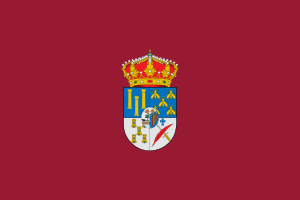Province of Salamanca facts for kids
Salamanca is a province located in western Spain. It is part of the autonomous community called Castile and León (Castilla y León). Think of an autonomous community like a large region with its own government, and a province is a smaller area within that region. Salamanca is bordered by other Spanish provinces: Zamora, Valladolid, Ávila, and Cáceres. To its west, it shares a border with the country of Portugal. In 2018, about 331,473 people lived in the province of Salamanca.
The province is divided into many smaller areas. It has 362 municipalities, which are like local towns or districts. It also has 11 comarcas (traditional regions), 32 mancomunidades (groups of municipalities working together), and five judicial districts (areas for legal administration). More than half of these 362 municipalities are small villages with fewer than 300 people living in them.
Contents
Understanding Provinces in Spain
A province in Spain is a bit like a county in other countries. It's a way to organize the land and the people who live there. Each province has its own capital city, which is usually the largest city in that province. The capital city of the Salamanca province is also called Salamanca. Provinces help with things like local government, public services, and managing resources for the people living there.
Where is Salamanca Located?
The Province of Salamanca is in the western part of Spain. This area is known for its wide plains and beautiful natural landscapes. Being close to Portugal means it has a unique mix of cultures and history influenced by both Spain and its neighbor. The land here can vary, from flat areas to hills, and it often has a climate with hot summers and cold winters.
People and Communities
The population of Salamanca province is spread out across its many municipalities. While the capital city of Salamanca is quite large and busy, many people live in smaller towns and villages. These smaller communities often have a strong sense of local tradition and history. It's common to find old churches, traditional houses, and local festivals in these charming villages.
How Salamanca is Organized
The way Salamanca is divided helps manage the province effectively.
- Municipalities: These are the smallest local government units, like towns or small cities and their surrounding areas. Each municipality has its own local council that makes decisions for its residents.
- Comarcas: These are traditional regions that often share similar geography, history, or culture. They are not always administrative divisions but are important for understanding the local identity.
- Mancomunidades: Sometimes, several small municipalities work together to share services like water supply, waste collection, or public transport. This helps them be more efficient and provide better services to their citizens.
- Judicial Districts: These are areas set up for the legal system, where courts and other legal services are located.
See also
 In Spanish: Provincia de Salamanca para niños
In Spanish: Provincia de Salamanca para niños



